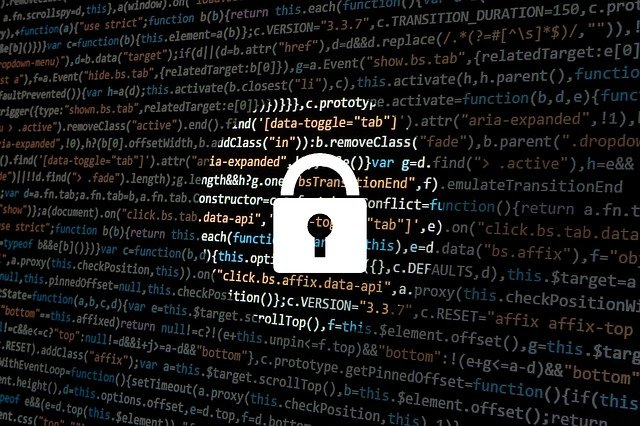The Importance of Online Privacy and Protecting Your Website Visitors

So much of our lives reside in the digital sphere. We have social media accounts with our real names, our real schools tagged, and our real relatives and friends following us. Our Google Business Profiles and websites have all of the necessary details about who we are and what we do professionally. Public figures have entire Wikipedia pages devoted to every moment they have ever experienced. With the right searches, anyone is able to learn about anyone they want. But you have a lot of personal data, too. And that’s what you don’t want to fall into the wrong hands.
In order to safeguard your data against cybercriminals, you have to be extremely careful. They want to be able to manipulate you so that they can serve their own goals. Oftentimes, this means stealing your money. As a business, this issue doesn’t just concern your team. It also concerns all of the customers who are depending on you to get them through the buyer’s journey without intrusion. By actively protecting your website, you can assure them that their data is safe with you. Let’s get into what it truly means to have online privacy.
Definitions for Online Privacy Keywords
When you use the internet, you need to ensure that you are maintaining your online privacy. Otherwise, it can spell a lot of problems for you in the future. And cybersecurity doesn’t have to be confusing. It’s a mainstream concern that everyone should be up to date about. These are some of the terms that you need to know.
Data Breach
Any business—and, for that matter, any individual—can be at risk of a data breach. This is when confidential information is exposed to an unauthorized party. Information may consist of trade secrets or credit card numbers. It may even be on a grander scale, resulting in a matter of national security. In any case, a data breach has three phases. The first is research, where the cybercriminal is searching for potential weaknesses that they can exploit. Secondly comes the attack, either done via a network or through social engineering. Finally comes the extraction of data. The hacker may choose to simply use this data to their benefit or blackmail the person they got it from.

Photo by Azamat E on Unsplash
Digital Footprint
The more you participate in online activities, the greater your digital footprint grows. For instance, every time you post on social media or make a purchase on an e-commerce website. You may not even be thinking about how an activity could contribute to the trail of data you are leaving behind. But whether you are doing something actively or passively, it can have an impact on your online privacy. Digital footprints matter because any public data is relatively permanent. You don’t have control over how someone else is going to use that data. This means cybercriminals are capable of exploiting your digital footprint for their gain.
Tracking Cookie
There are dozens of regulations for the use of tracking cookies, including the General Data Protection Regulation (GDPR). Tracking cookies are samples of text that come from viewing a website. The text collects user data like browsing history and purchase trends. This has been especially helpful for advertising technology businesses so that they can best cater their content to individual users. Although they aren’t necessarily harmful, internet users should be aware of the fact that their personal information is being processed. That being said, as of 2020, Google announced that it would be deprecating cookies from third parties on Chrome, for the sake of online privacy.
Antivirus Software
Used to detect, prevent, and remove malware, antivirus software provides real-time protection. It checks the files and programs on your computer, holding them up against a database of known malware. Considering new viruses are created every day, your antivirus software will also search for possibilities of unknown malware. From there, any malicious code that is detected will be taken care of. You need antivirus software to maintain your online privacy. Regular scanning will serve you well in understanding the health of your device so that you don’t find yourself in a compromised position.
Identity Theft
When a cybercriminal gets ahold of your personal or financial information, they are able to illegally use it to pretend to be you. Identify theft involves unauthorized transactions that can leave you taking a hit on your reputation and credit. One method of identity theft involves accessing corporate databases. This way, the cybercriminal has access to entire lists of customer information. To combat this, you need to keep an eye on both public and private records. Alert your customers about any purchases or changes being made to their accounts so that they also stay in the loop.
Phishing Scam
Typically done through malicious links in emails, phishing scams are a form of fraud where the cybercriminal acts as a trusted source. They could pretend to be another business or someone that you personally know. They prey on your sense of urgency. An example might be claiming that someone is trying to hack into your bank account. You are informed that you have to change your password at this link immediately. It’s very common for phishing to involve problems with accounts. Phishing may not always be obvious, but there are tell-tale signs that the messages go against your online privacy, such as suspicious email addresses. You might even hover over the link and see in the corner of your screen that it will take you somewhere else entirely.

Photo by Sora Shimazaki on Pexels
Privacy Policy
Every website collects data from its visitors in some capacity. For that reason, your business needs to have a privacy policy on its website. Despite it largely being overlooked by users, it is a crucial and mandatory legal document. A private policy explains to users how a business is collecting and managing the data of their customers. It also details the rights of the users, in that regard. The contents of the policy will depend on the applicable law about online privacy. This differs between countries and jurisdictions. Essentially, a privacy policy acts to keep sites in compliance with legal obligations and protect their customers.
Best Practices for Maintaining Online Privacy
Keep your business’s data protected from hackers. Do everything that you can on the backend, and don’t forget to teach your team everything you know. Cybersecurity isn’t a one-and-done deal. It’s something that you should keep up with on a daily basis so that you stay far away from threats. Here are ways that you can improve the customer experience on your website.
Don’t Click Just Anything
Cybercriminals are known for making their messages appear legitimate. But if you receive unsolicited links or attachments, it is in your best interest to ignore them. Of course, that’s easier said than done. Scams can happen to anyone. So, you just need to be more thoughtful about what you are willing to open. Let your staff know that they should only click on emails that come in from certain parties. Even then, they should ask for a second opinion if something doesn’t feel quite right. Understand that this goes for accessing links outside of email, as well. Stray away from clicking links that are from unfamiliar social media accounts or sketchy pages on Google.
Add an SSL Certificate
Prove to your customers that your website can be trusted. With a Secure Sockets Layer (SSL) certificate, you have a bit of code that ensures that the connection is encrypted. To know that a site has this, a small lock icon is shown next to the address bar. Otherwise, Google will let you know that the site is not secure. When it says this, customers should not be willing to provide their credit card information to you. It’s a risk to their online privacy. Your business needs to invest in an SSL certificate for reasons beyond conveying trust. It also prevents cybercriminals from creating a fake version of your site because it verifies your ownership.
Encrypt Sensitive Data
Every business should encrypt its data, on account of the fact that it drastically mitigates the chance of cybercriminals misusing it. There are two types—at-rest encryption and in-transit encryption. At-rest encryption entails securing inactive data that is stored on a device or network. It is incorrect to believe that this data is less vulnerable. In fact, because of this line of thinking, hackers find this data to be a more valuable target. On the other hand, in-transit encryption is the protection of data as it moves between devices or networks. The data is encrypted before transmission and then verified upon arrival. Both must happen to lessen the chance of interception.

Photo by Christina @ wocintechchat.com on Unsplash
Update Your Software
Not only do software updates improve compatibility and supply you with new features, but they also prevent security issues. Patches are made for a reason. They repair any holes that have been discovered in the monitoring process. This fixes any potential for bugs, crashes, and other online privacy problems. The minor enhancements that come with software updates remove any outdated features so that you experience fewer vulnerabilities. These must be executed quickly and consistently. By neglecting the updates when they appear, malware could make its way onto your device. The cybercriminal could then gain control over the device and encrypt your files so that you lose access.
Encourage Smart Passwords
Oftentimes, when you are making an account for a website, it will flag passwords that don’t upload the standards for online privacy. An example might be a password like “amazon123” for your Amazon account. You will instead be informed that you need to add a special character and uppercase letters. And it is in best practice not to use the name of a site in your password. So, a better password could be “3Comm3rceSHOP!?58” Note that you should use a password manager on hand. This will keep you from forgetting passwords, which is especially helpful if you change devices and no longer have all of them automatically saved.
Get a Firewall
Protect your business from internal and external threats on your systems by using a firewall. This is a network security device that monitors traffic to allow or block certain users. To put it simply, it acts as a bodyguard. It can tell who is going to be harmful and turns them away at the gate. Although, it doesn’t have to specifically be the person that is turned away. It could be the contents of what they are trying to transmit. Something that you need to be aware of, though, is that firewalls can’t protect you from every threat. While it’s a tool that you absolutely should incorporate into your online activities, you need to supplement it with security awareness across the board.
Use a Secure Web Host
A major sign that your web host isn’t the right one for you is if they don’t make sure that you are safe against malware. They need to inform you when your site is at risk. If you haven’t taken care of the problem or asked them to take care of it, you could have your site shut down until then to keep from causing an online privacy incident. Malware could be passed on to your customers and destroy their trust in you. In the case that something does go wrong with your site, your web host should be able to provide you with data backups. This way, your business doesn’t have to be down for even longer.
WEBii has been a leading Texas web host for 26 years. We understand how important it is to have a website that is both aligned with your goals and protected with robust cybersecurity. Contact us to discuss which of our plans will best suit your business or non-profit. Our highly reliable servers even come equipped with a friendly support team to guide you through your online privacy needs.
Posted in: Security and IT, Small Business, Web Hosting, Web Site Maintenance, WWW Learning Center
Comments are closed.
Latest & Greatest
- Maximize Your Site Redesign Budget: What Texas Web Developers Need From You for a Cost-Effective Collaboration
- Responsive Web Design in Austin: Why It Matters For Your Local Business
- How to Prepare Your Website for a PR Campaign
- Why Defining Your Organization’s Strategy is Key to Brand and Marketing Development
- Empathetic Storytelling in an AI World
- Customer Retention: A Comprehensive Guide to Retaining Your Customers
- Top Reasons Why Web Designs Don’t Launch
